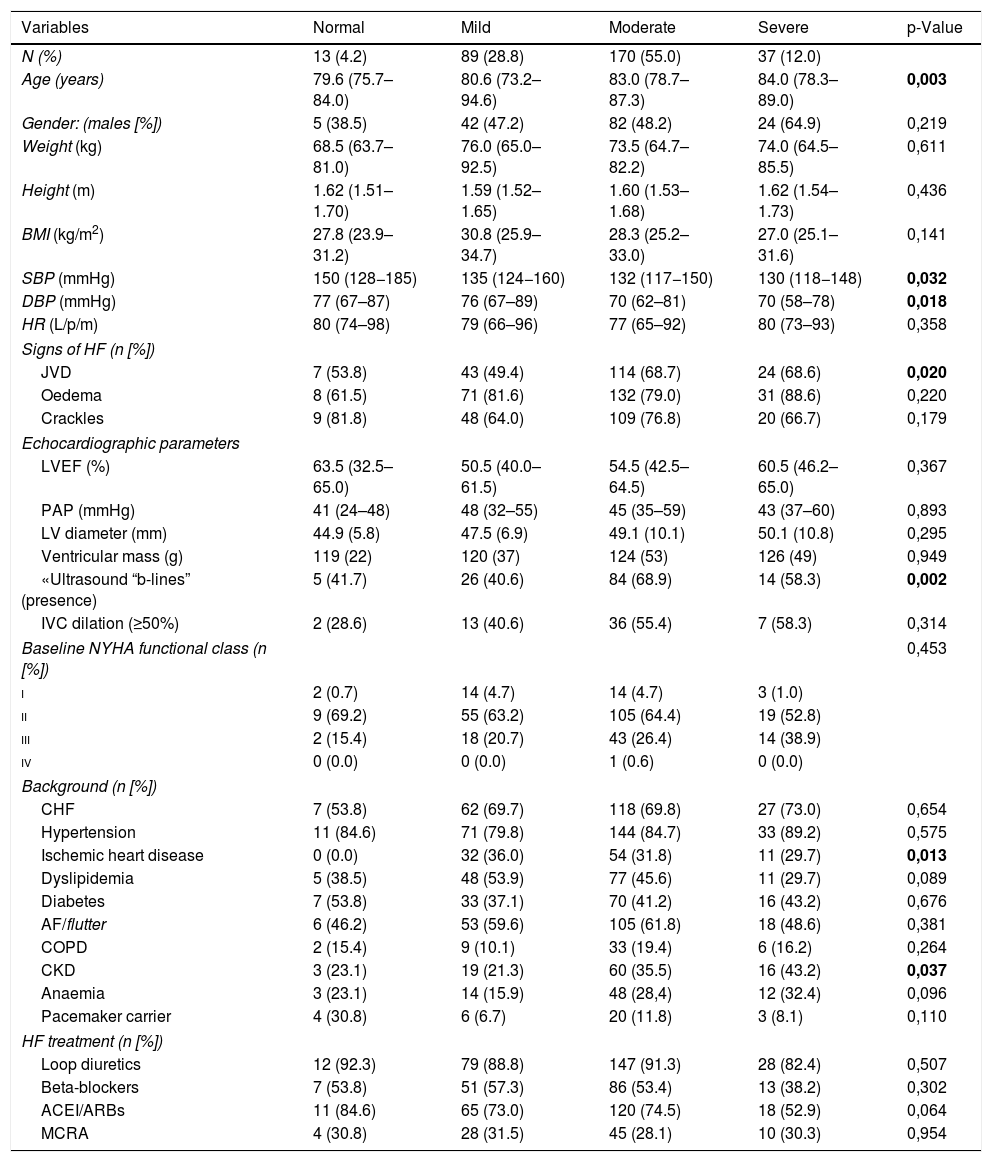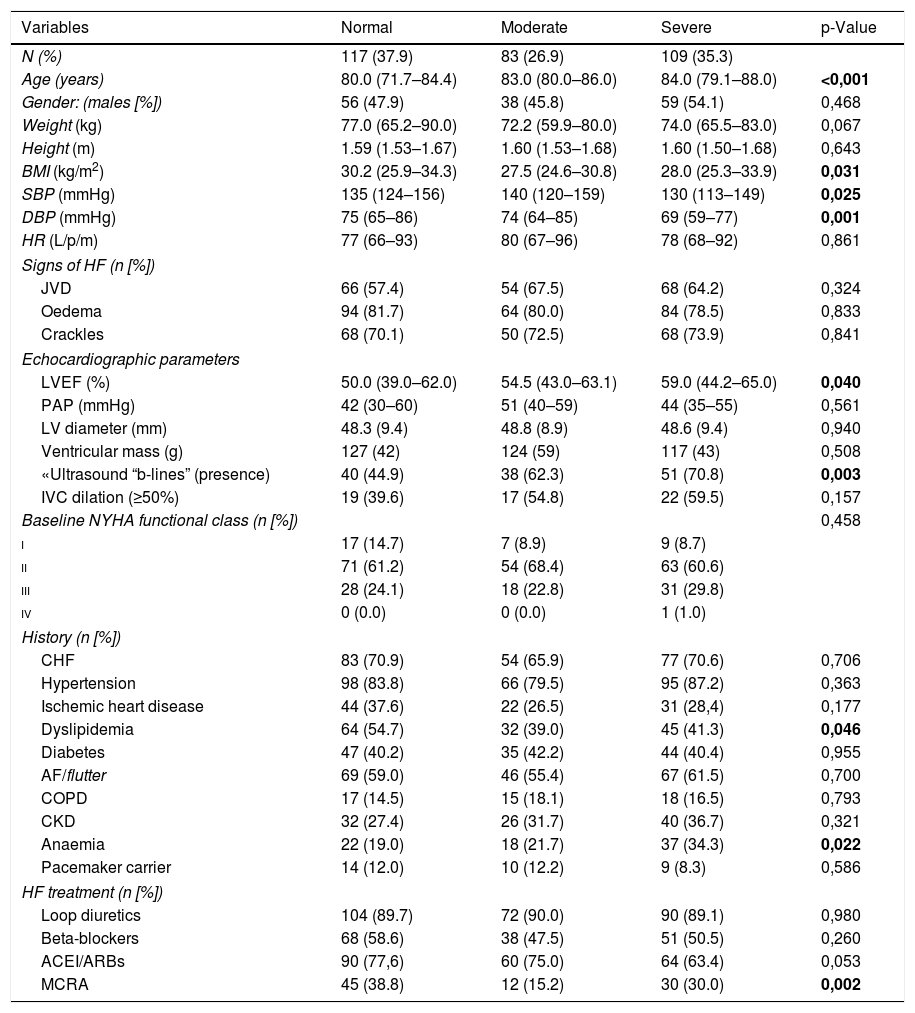Malnutrition is frequent in patients with heart failure (HF) and contributes to increased systemic congestion, but also hinders its correct assessment, especially during decompensations. Estimating the degree of malnutrition and its relationship with systemic congestion is important to optimize treatment during decompensations.
Material and methodsRetrospective cohort study in patients with acute HF. The population was stratified according to CONUT (Controlling Nutritional Status) and PNI (Prognostic Nutritional Index) nutrition indices in order to analyse their relationship with objective parameters of congestion and the prognostic value of malnutrition.
Results309 patients were included. More than half presented some degree of malnutrition upon admission. The degree of congestion was significantly higher in malnourished patients, with a higher proportion of «comet tail artifacts» and a higher relative plasma volume. NT-proBNP concentrations, both on admission and at discharge, were also significantly higher in malnourished patients, regardless of the scale used. The univariate analysis identified the CONUT and PNI index as factors associated with one-year mortality from any cause (HR 1.62 [1.22–2.14]; p = 0.001) and PNI (HR 65 [0.53–0.80]; p ≤ 0.001), respectively.
ConclusionsA higher degree of malnutrition (determined by means of the CONUT and PNI indices) in patients with acute HF was associated with a higher presence of objective parameters of congestion and a higher one-year all-cause mortality.
La desnutrición es frecuente en los pacientes con insuficiencia cardíaca (IC). Dicha situación contribuye al incremento de la congestión sistémica dificultando el manejo clínico. Cuantificar la desnutrición y su relación con la congestión sistémica, es importante para optimizar el tratamiento durante la fase aguda.
Material y métodosEstudio de cohortes retrospectivo en pacientes con diagnóstico de IC aguda. La población se estratificó según los índices de nutrición de CONUT (Controlling Nutritional Status) y PNI (Prognostic Nutritional Index) con el objetivo de analizar su relación con parámetros objetivos de congestión y el valor pronóstico al año de seguimiento.
ResultadosSe incluyeron un total de 309 pacientes, presentando más de la mitad algún grado de desnutrición al ingreso. El grado de congestión fue significativamente superior en los pacientes desnutridos, con una mayor proporción de «líneas b» y un mayor volumen plasmático relativo. Las concentraciones de la prohormona N-terminal del péptido natriurético cerebral (NT-proBNP), tanto al ingreso como al alta, también fueron significativamente superiores en los pacientes desnutridos, independientemente de la escala empleada. El análisis univariante identificó el índice de CONUT y PNI, como factores asociados a la mortalidad al año para todas las causas (HR 1,62 [1,22–2,14]; p = 0,001) y de PNI (HR 0,65 [0,53–0,80]; p = <0,001), respectivamente.
ConclusionesUn mayor grado de desnutrición (determinado mediante los índices de CONUT y PNI) en pacientes con IC aguda, se asoció a una mayor presencia de parámetros objetivos de congestión y a una mayor mortalidad al año para todas las causas.
Artículo
Comprando el artículo el PDF del mismo podrá ser descargado
Precio 19,34 €
Comprar ahora











